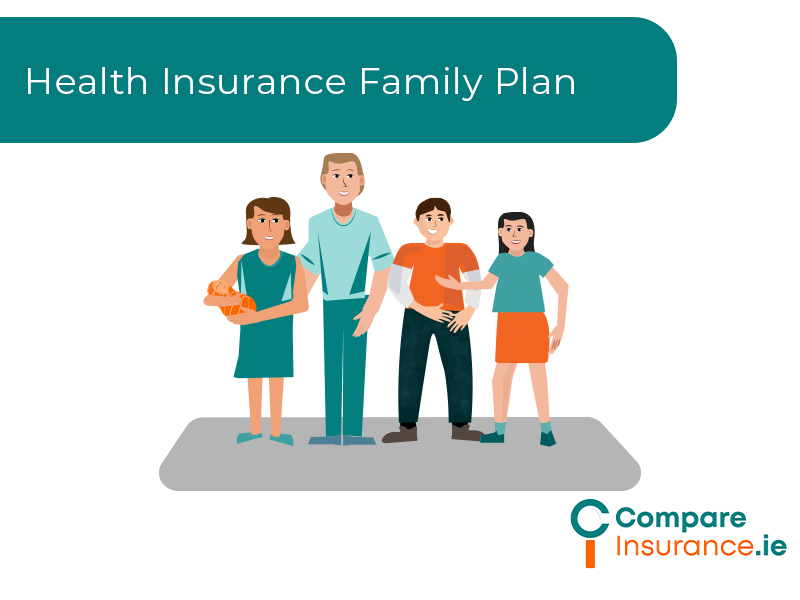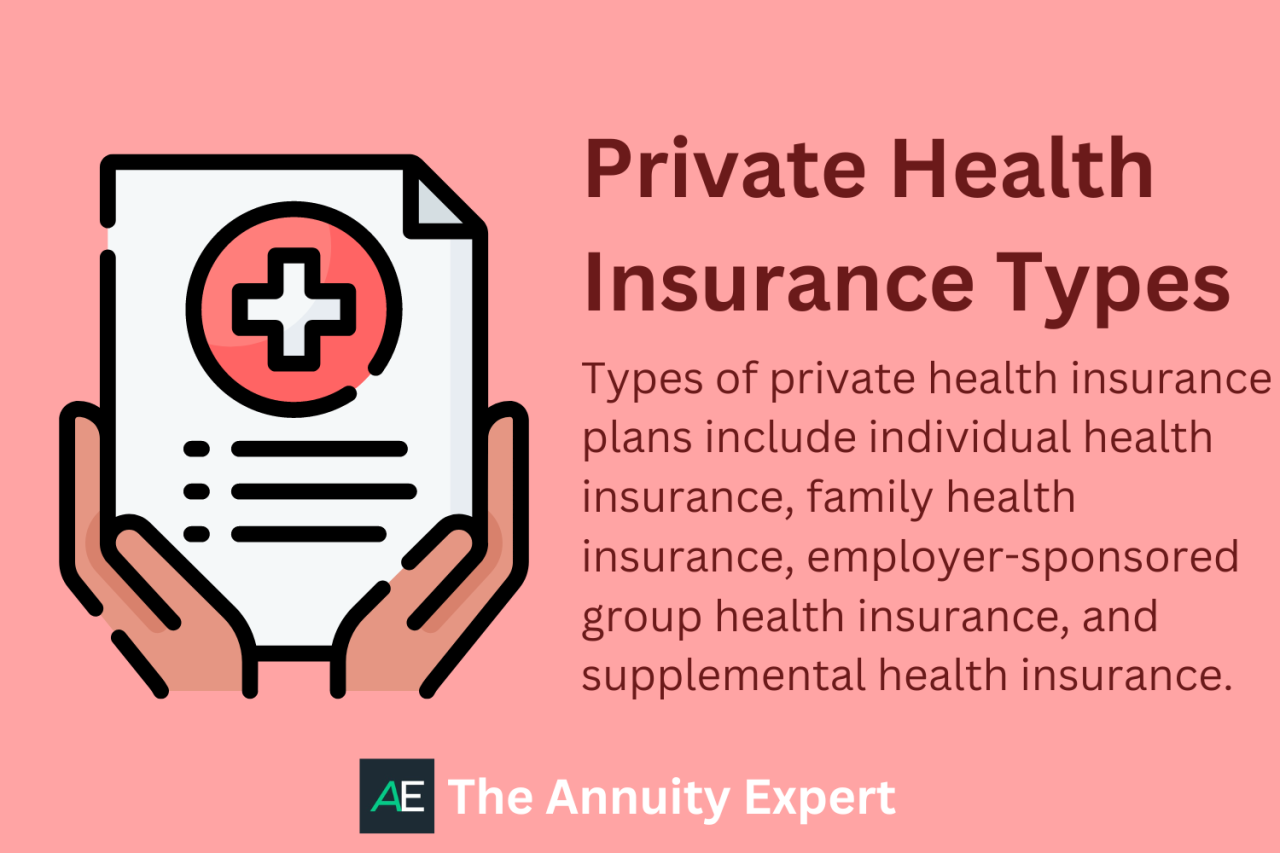Health Insurance
How to Choose the Right Health Plan for Your Family: A Comprehensive Guide

Exploring the realm of selecting the ideal health plan for your family, this guide aims to provide valuable insights in a formal yet engaging manner, ensuring a thorough understanding of this crucial decision-making process.
Delve into the following paragraphs to uncover essential tips and considerations for navigating the complex landscape of health insurance options.
Researching Health Plans
Researching different health plans is crucial to finding the right one for your family's needs. It allows you to compare benefits, costs, and coverage to make an informed decision.
Where to Find Information
- Check the official websites of insurance companies to see the health plans they offer.
- Consult with your employer's HR department for information on group health plans available.
- Use online comparison tools and healthcare marketplaces to explore various options.
Comparing Benefits, Costs, and Coverage
- Look at the types of services covered, such as preventive care, prescription drugs, and specialist visits.
- Compare the premiums, deductibles, and copayments of different health plans to understand the costs involved.
- Review the network of healthcare providers included in each plan to ensure your preferred doctors are covered.
- Consider the out-of-pocket maximum and coverage limits to assess financial protection in case of a medical emergency.
Assessing Family's Healthcare Needs
When it comes to choosing the right health plan for your family, it is crucial to assess your family's healthcare needs. By evaluating these needs, you can ensure that you select a plan that provides the necessary coverage for your family members.Factors to consider when assessing healthcare needs include:
- Age of family members: Different age groups have varying healthcare requirements, so it's essential to consider the ages of your family members.
- Current health conditions: Take into account any existing health conditions or chronic illnesses that require regular medical attention.
- Frequency of doctor visits: If your family members visit the doctor frequently, you may need a plan with lower copayments or deductibles.
- Prescription medications: Consider the cost of prescription medications and whether the plan covers the specific medications needed by your family.
- Specialized care: If any family member requires specialized care or treatments, ensure that the plan includes coverage for these services.
Determining the essential coverage areas for your family involves looking at:
- Primary care physician visits
- Specialist visits
- Emergency care
- Hospitalization
- Maternity care (if applicable)
- Mental health services
- Dental and vision care
Understanding Health Plan Types

When choosing a health plan for your family, it's essential to understand the different types available to make an informed decision that meets your family's healthcare needs.
Health Maintenance Organization (HMO)
- HMOs require you to choose a primary care physician (PCP) who coordinates all your healthcare needs.
- Pros: Lower out-of-pocket costs, comprehensive coverage, and no need for referrals to see specialists.
- Cons: Limited provider network and less flexibility in choosing healthcare providers.
Preferred Provider Organization (PPO)
- PPOs offer more flexibility in choosing healthcare providers without needing a referral.
- Pros: Larger provider network, out-of-network coverage, and no requirement to select a PCP.
- Cons: Higher premiums and out-of-pocket costs compared to HMOs.
Exclusive Provider Organization (EPO)
- EPOs combine features of both HMOs and PPOs, with a designated network of healthcare providers.
- Pros: Lower costs compared to PPOs, no out-of-network coverage, and no need for referrals.
- Cons: Limited provider network like HMOs and no coverage for out-of-network services.
High Deductible Health Plan (HDHP)
- HDHPs have higher deductibles and lower premiums, often paired with a Health Savings Account (HSA) for tax advantages.
- Pros: Lower monthly premiums, ability to save for medical expenses tax-free in an HSA, and preventive care coverage.
- Cons: Higher out-of-pocket costs until the deductible is met, limited coverage before reaching the deductible.
Considering Costs and Affordability

When choosing a health plan for your family, it is crucial to carefully consider the costs involved to ensure that you are getting the best value for your money. Evaluating the total costs of a health plan involves looking beyond just the monthly premiums and taking into account other expenses like deductibles and copayments.
Balancing coverage needs with affordability is essential to ensure that you are not overpaying for services you may not need.
Importance of Premiums, Deductibles, and Copayments
Understanding the different cost components of a health plan can help you make an informed decision that aligns with your family's healthcare needs and budget. Here's a breakdown of the key cost factors to consider:
- Premiums:These are the monthly fees you pay to the insurance company to maintain coverage. While a lower premium may seem attractive, it is essential to ensure that it does not come at the expense of higher out-of-pocket costs.
- Deductibles:This is the amount you must pay out of pocket before your insurance kicks in. A plan with a higher deductible typically has lower monthly premiums, but it may require you to pay more upfront in case of medical services.
- Copayments:These are fixed amounts you pay for covered services, such as doctor visits or prescription medications. Understanding copayment requirements can help you estimate your out-of-pocket expenses more accurately.
Strategies for Balancing Coverage Needs with Affordability
Here are some tips to help you navigate the costs of health plans and find a balance between comprehensive coverage and affordability:
- Compare total costs: Look beyond the premium amount and consider how deductibles and copayments can impact your overall expenses.
- Assess your family's healthcare needs: Evaluate the frequency of doctor visits, medications, and potential medical procedures to choose a plan that offers adequate coverage without unnecessary costs.
- Utilize cost-saving options: Take advantage of preventive services, generic medications, and in-network providers to minimize out-of-pocket expenses and maximize the value of your health plan.
- Consider supplemental coverage: If your family has specific healthcare needs, such as vision or dental care, explore options for supplemental insurance to fill potential coverage gaps without breaking the bank.
Network Coverage and Accessibility
When choosing a health plan for your family, it is crucial to consider the network coverage and accessibility provided by the plan. This aspect determines which healthcare providers you can visit and the costs associated with your care.
Importance of Network Coverage
Network coverage refers to the group of healthcare providers, hospitals, and facilities that have contracted with the insurance company to provide services at a discounted rate. Being in-network can result in lower out-of-pocket costs for you as the plan has negotiated rates with these providers.
- In-Network Providers: These are healthcare providers, hospitals, and facilities that have a contract with your insurance company. Visiting in-network providers typically results in lower costs for you.
- Out-of-Network Providers: These are healthcare providers, hospitals, and facilities that do not have a contract with your insurance company. While you can still see out-of-network providers, the costs may be higher, and you may be responsible for a larger share of the expenses.
Ensuring Preferred Providers are Included
Before selecting a health plan, it is essential to verify that your preferred healthcare providers are included in the plan's network. Here are some steps to ensure your providers are covered:
- Check the plan's provider directory: Insurance companies typically provide a list of in-network providers on their website. Make sure to search for your current doctors, specialists, and hospitals to ensure they are included.
- Contact your providers directly: Reach out to your healthcare providers to confirm if they accept the specific health plan you are considering. They can also provide information on the services covered and the costs associated with the plan.
- Consider the distance: In addition to provider availability, consider the location of the in-network providers. Ensure that they are conveniently located and easily accessible for you and your family.
Additional Benefits and Services
When choosing a health plan for your family, it is important to consider the additional benefits and services beyond just basic medical coverage. These extra services can greatly impact your family's overall well-being and satisfaction with the plan.
Dental, Vision, and Mental Health Coverage
- Many health plans offer dental, vision, and mental health coverage as additional benefits. Dental and vision care are essential for maintaining overall health, while mental health services are crucial for emotional well-being.
- Assess your family's needs for these services and consider the value they bring to your overall healthcare. For example, if your family members require frequent dental check-ups or wear glasses, having coverage for these services can save you money in the long run.
- Look for health plans that provide comprehensive mental health coverage, including therapy sessions and counseling. Mental health is just as important as physical health, and having access to these services can greatly benefit your family's overall well-being.
Special Programs and Services
- Some health plans offer special programs or services that cater to specific needs or conditions. For example, a plan may provide a weight management program for those looking to improve their health through lifestyle changes.
- Other plans may offer wellness programs, such as gym memberships or nutrition counseling, to promote healthy living among members. These programs can be valuable additions to your health plan and help your family stay healthy and active.
- Consider any special programs or services that align with your family's health goals and lifestyle. These offerings can enhance your overall healthcare experience and make your health plan more valuable to your family.
Ending Remarks

In conclusion, the journey to finding the perfect health plan for your family involves meticulous research, careful assessment of needs, and weighing the costs against benefits. With the right knowledge and guidance, you can make an informed choice that prioritizes your family's well-being.
User Queries
What factors should I consider when assessing my family's healthcare needs?
When evaluating your family's healthcare needs, consider factors such as existing medical conditions, anticipated future needs, and preferred healthcare providers.
How do I ensure that my preferred healthcare providers are included in the plan's network?
To ensure your preferred providers are in-network, you can directly check with the insurance company, visit the provider's website, or contact the provider's office for confirmation.
What are the key differences between HMO, PPO, EPO, and HDHP health plans?
HMOs typically require a primary care physician and referrals, while PPOs offer more flexibility in provider choice. EPOs have a narrower network, and HDHPs come with high deductibles and lower premiums.
Are there any special programs or services offered by health plans that might benefit my family?
Some health plans offer special programs like wellness initiatives, telehealth services, or discounts on gym memberships that could be advantageous for your family's health and well-being.
Health Insurance
Understanding Wellness Packages in Private Insurance Plans: A Comprehensive Guide

Understanding Wellness Packages in Private Insurance Plans sets the stage for this informative exploration, offering readers a detailed look at the intricacies of private insurance coverage.
This guide aims to shed light on the significance of wellness packages and how they can benefit individuals seeking comprehensive healthcare coverage.
Overview of Wellness Packages in Private Insurance Plans
Wellness packages in private insurance plans refer to a set of services and benefits aimed at promoting and maintaining the overall health and well-being of the insured individuals. These packages go beyond traditional medical coverage to include preventive care, lifestyle management, and other wellness-focused initiatives.The importance of wellness packages in private insurance plans lies in their proactive approach to healthcare.
By incentivizing policyholders to engage in healthy behaviors and regular screenings, insurance companies can help prevent costly medical conditions in the long run. This not only benefits the individuals by improving their quality of life but also reduces healthcare expenses for both the insured and the insurance provider.
Common Components Included in Wellness Packages
- Annual Health Screenings: Regular check-ups, blood tests, and screenings for conditions like hypertension, cholesterol levels, and diabetes are typically included in wellness packages to detect potential health issues early.
- Wellness Programs: Insurers may offer access to wellness programs such as nutrition counseling, weight management support, smoking cessation programs, and fitness classes to help policyholders adopt healthier lifestyles.
- Telemedicine Services: Some wellness packages include virtual consultations with healthcare providers, allowing policyholders to seek medical advice and treatment remotely.
- Health Risk Assessments: Insurance companies may conduct health risk assessments to evaluate the overall health status of policyholders and provide personalized recommendations for improving their well-being.
- Preventive Care Benefits: Coverage for preventive services like vaccinations, mammograms, colonoscopies, and flu shots is often included in wellness packages to encourage policyholders to prioritize preventive care.
Benefits of Wellness Packages
Wellness packages in private insurance plans offer a wide array of benefits for individuals looking to prioritize their health and well-being. These packages encompass various preventive measures and services designed to promote a healthier lifestyle and early detection of potential health issues.
Improved Health Outcomes
One of the primary advantages of incorporating wellness packages in private insurance plans is the potential for improved health outcomes. By encouraging individuals to engage in preventive screenings, regular check-ups, and healthy lifestyle choices, these packages help in the early detection and management of health conditions.
Cost Savings
Wellness packages can also lead to cost savings in the long run. By focusing on prevention and early intervention, individuals are less likely to require expensive medical treatments for advanced health issues. This can result in lower healthcare costs for both the individual and the insurance provider.
Increased Employee Productivity
In corporate settings, wellness packages offered through private insurance plans can lead to increased employee productivity. By promoting a healthier workforce through wellness initiatives, companies may experience reduced absenteeism, higher morale, and better overall performance.
Personalized Care
Another benefit of wellness packages is the opportunity for personalized care. These packages often include tailored health assessments, nutrition counseling, and fitness programs to meet the individual needs of the insured. This personalized approach can lead to better health outcomes and increased motivation for maintaining a healthy lifestyle.
Coverage Details
When it comes to wellness packages in private insurance plans, coverage details play a crucial role in determining the extent of benefits individuals can receive. These details Artikel the specific services, treatments, and preventive measures that are included in the package to promote overall health and well-being.
Typical Coverage Details
- Regular health screenings and check-ups to monitor overall health status.
- Nutritional counseling and guidance to help individuals make healthier food choices.
- Fitness programs or gym memberships to encourage physical activity and exercise.
- Mental health services such as therapy sessions or counseling for stress management.
Variations in Coverage Across Providers
It's important to note that coverage details may vary based on different private insurance providers. Some insurers may offer more comprehensive wellness packages with additional services, while others may have limitations on certain treatments or therapies.
Examples of Covered Services
- Chronic disease management programs for conditions like diabetes or hypertension.
- Smoking cessation programs to help individuals quit tobacco use.
- Alternative therapies such as acupuncture or chiropractic care for holistic wellness.
Cost Considerations
When it comes to private insurance plans that include wellness packages, cost considerations play a crucial role in determining the overall value for individuals. Understanding the cost implications and evaluating the cost-effectiveness of wellness packages can help individuals make informed decisions about their insurance coverage.
Cost Implications of Wellness Packages
Wellness packages in private insurance plans often involve additional charges or premiums on top of the standard coverage. These costs can vary depending on the extent of the wellness benefits included, such as gym memberships, preventive screenings, or wellness coaching.
It's essential for individuals to carefully assess these costs and compare them with the potential benefits they stand to gain from the wellness package.
Evaluating Cost-Effectiveness
To determine the cost-effectiveness of a wellness package, individuals should consider factors such as their current health status, lifestyle habits, and the likelihood of utilizing the wellness benefits. Calculating the potential savings from preventive care services or discounts on wellness activities can help gauge whether the cost of the package aligns with the expected benefits.
Comparison Across Insurance Providers
Different insurance providers may offer varying wellness packages with different costs and benefits. It's advisable for individuals to compare the cost of wellness packages across multiple insurance providers to find the most suitable option that meets their needs and budget.
Factors to consider include the range of wellness benefits, cost-sharing arrangements, and any limitations or restrictions on coverage.
Wellness Programs and Initiatives

Wellness programs and initiatives are key components of wellness packages offered by private insurance plans. These programs are designed to promote healthy behaviors, prevent illnesses, and improve overall well-being.
Types of Wellness Programs
- Physical Fitness Programs: These programs encourage members to engage in regular exercise routines to improve cardiovascular health, strength, and flexibility.
- Nutrition Counseling: Nutritionists provide personalized guidance on healthy eating habits, meal planning, and weight management.
- Mental Health Support: Counseling services and stress management techniques are offered to promote mental well-being and emotional resilience.
- Smoking Cessation Programs: Support and resources are provided to help members quit smoking and reduce the risk of related health issues.
Impact on Overall Health and Well-being
Participating in wellness programs has a significant impact on overall health and well-being. By adopting healthy behaviors and lifestyle changes, individuals can experience improved physical fitness, mental clarity, and emotional stability. These programs empower individuals to take control of their health and make positive choices that lead to a higher quality of life.
Contribution to Preventive Healthcare
Wellness programs contribute to preventive healthcare measures by focusing on early intervention and disease prevention. By addressing risk factors and promoting healthy habits, these programs help individuals avoid chronic conditions and reduce healthcare costs in the long run. Regular participation in wellness initiatives can lead to better health outcomes and a lower risk of developing serious health issues.
Ultimate Conclusion

In conclusion, Understanding Wellness Packages in Private Insurance Plans is essential for making informed decisions about healthcare coverage. By delving into the details of wellness packages, individuals can better understand the options available to them and choose plans that align with their wellness goals.
FAQ Summary
What are wellness packages in private insurance?
Wellness packages in private insurance are comprehensive plans that include preventive care services, health screenings, and wellness programs to promote overall well-being.
How do wellness packages benefit individuals?
Wellness packages offer individuals access to preventive healthcare services, which can help detect health issues early, leading to better health outcomes and reduced medical costs in the long run.
Are wellness programs covered under wellness packages?
Yes, many wellness packages include wellness programs such as gym memberships, nutrition counseling, and stress management courses to support individuals in maintaining a healthy lifestyle.







